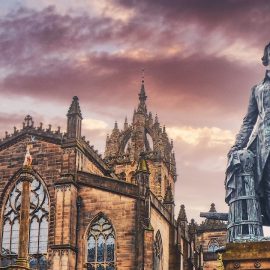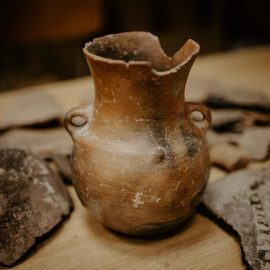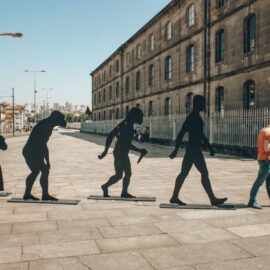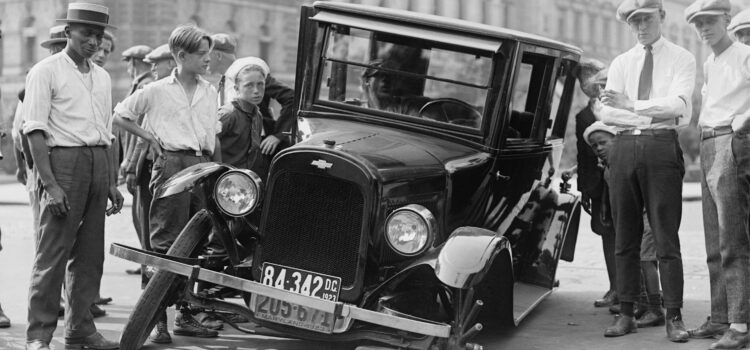
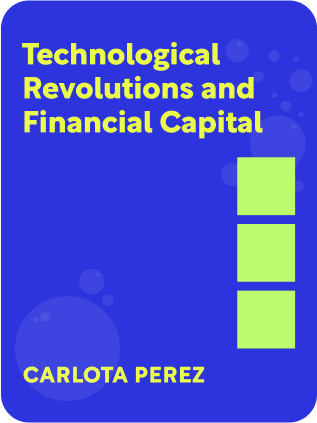
This article is an excerpt from the Shortform book guide to "Technological Revolutions and Financial Capital" by Carlota Perez. Shortform has the world's best summaries and analyses of books you should be reading.
Like this article? Sign up for a free trial here .
What was the fourth industrial revolution? What technologies were created that made this industrial revolution possible?
The fourth industrial revolution was the oil, automobile, and mass production revolution. These new technologies were responsible for the fourth industrial revolution and the economic development that followed.
Read more about the fourth industrial revolution and the technologies that made it possible.
The Fourth Industrial Revolution
The innovations that create the technological revolution gestate for some time before they make their huge impact. But a revolution needs a highly visible attractor to appear, symbolizing the new potential and sparking the imagination of pioneers. Often the attractor is not only a technological breakthrough, it is also cheap or opens new cost-competitive possibilities for industry. Perez calls this a big-bang. Often, these events can only be identified in hindsight, since at the time they’re obvious only to a narrow community.
Geographically, the revolution often gestates in a particular region, and propagates from core to periphery. This means the time that the new technology is deployed is not the same for all countries and can be delayed by decades. Globally, the full revolution may take a full century.
The new technologies prompting revolutions are not isolated; often many products had existed for some time playing minor roles, until the new technology offers it unprecedented value and scale. Oil and automobiles had both been developed since the 1880s, but the combination of them with mass production in the 1900s led to a revolution in affordable automobiles for the general public. Likewise, transistors and semiconductors were available in the 1950s, but the microprocessor made visible the potential of cheap microelectronics, the “computer on a chip.”
Each revolution consists of several technology systems that develop at different rhythms and in a sequence depending on feedback loops. The information revolution began with chips and hardware, leading to software and telecom, leading to the Internet, leading to mobile. Each of these can appear as separate revolutions rather than interdependent systems under a wider umbrella – each smaller system benefits from the previous mini-revolution, while also reinforcing the overall paradigm to which it belongs.
Oil, Automobile, and Mass Production – 1908
New technologies and industries of the 4th industrial revolution
- Mass-produced automobiles
- Cheap oil and fuels
- Petrochemicals (synthetics)
- Internal combustion engine
- Home electrical appliances
- Refrigerated and frozen foods
New or redefined infrastructures
- Networks of roads, highways, airports
- Networks of oil ducts
- Universal electricity
- Worldwide analog communications
“Common-sense” innovation principles of the 4th industrial revolution
- Mass production
- Mass markets
- Economies of scale of product and market volume
- Horizontal integration
- Standardization of products
- Synthetic materials
- Functional specialization
- Hierarchical pyramids
- Centralization-suburbanization
- Homogenization of consumption
- First nationally, then as platform for international expansion
The fourth industrial revolution marked one of the biggest changes in economics and technology.

———End of Preview———
Like what you just read? Read the rest of the world's best book summary and analysis of Carlota Perez's "Technological Revolutions and Financial Capital" at Shortform .
Here's what you'll find in our full Technological Revolutions and Financial Capital summary :
- What happened during the 2000 tech bubble and the 2002 crash
- The 5 technological revolutions that reshaped society since 1771
- How you might be able to predict and prepare for the next technological revolution

